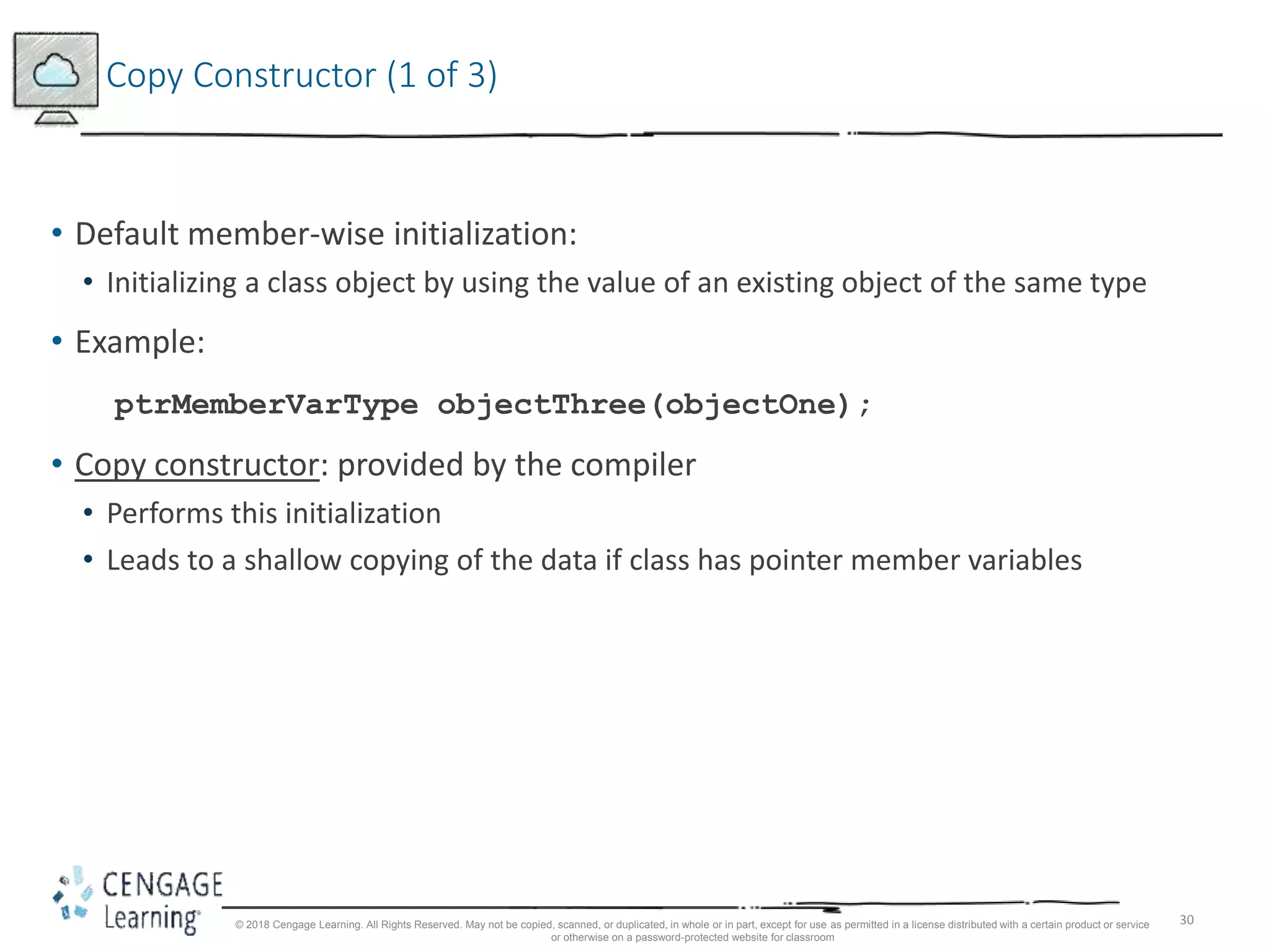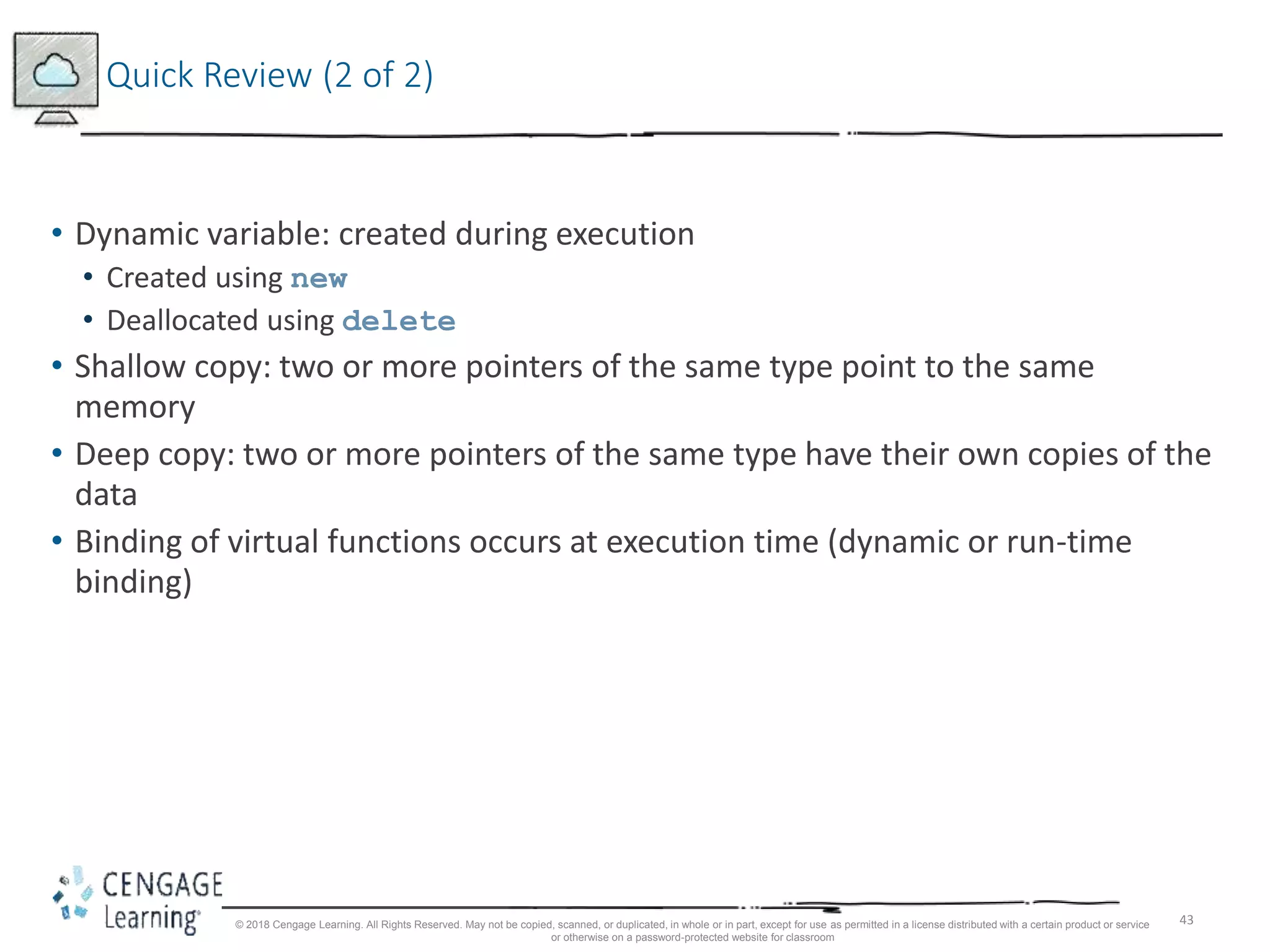This chapter covers pointers, classes, virtual functions, and abstract classes in C++. It discusses pointer variables and how to declare and manipulate them. It covers using pointers with classes and structs, as well as dynamic variables created with new and delete. The chapter also explores pointers with inheritance and polymorphism through virtual functions and abstract classes. It addresses issues like shallow vs deep copying when using pointers with classes.



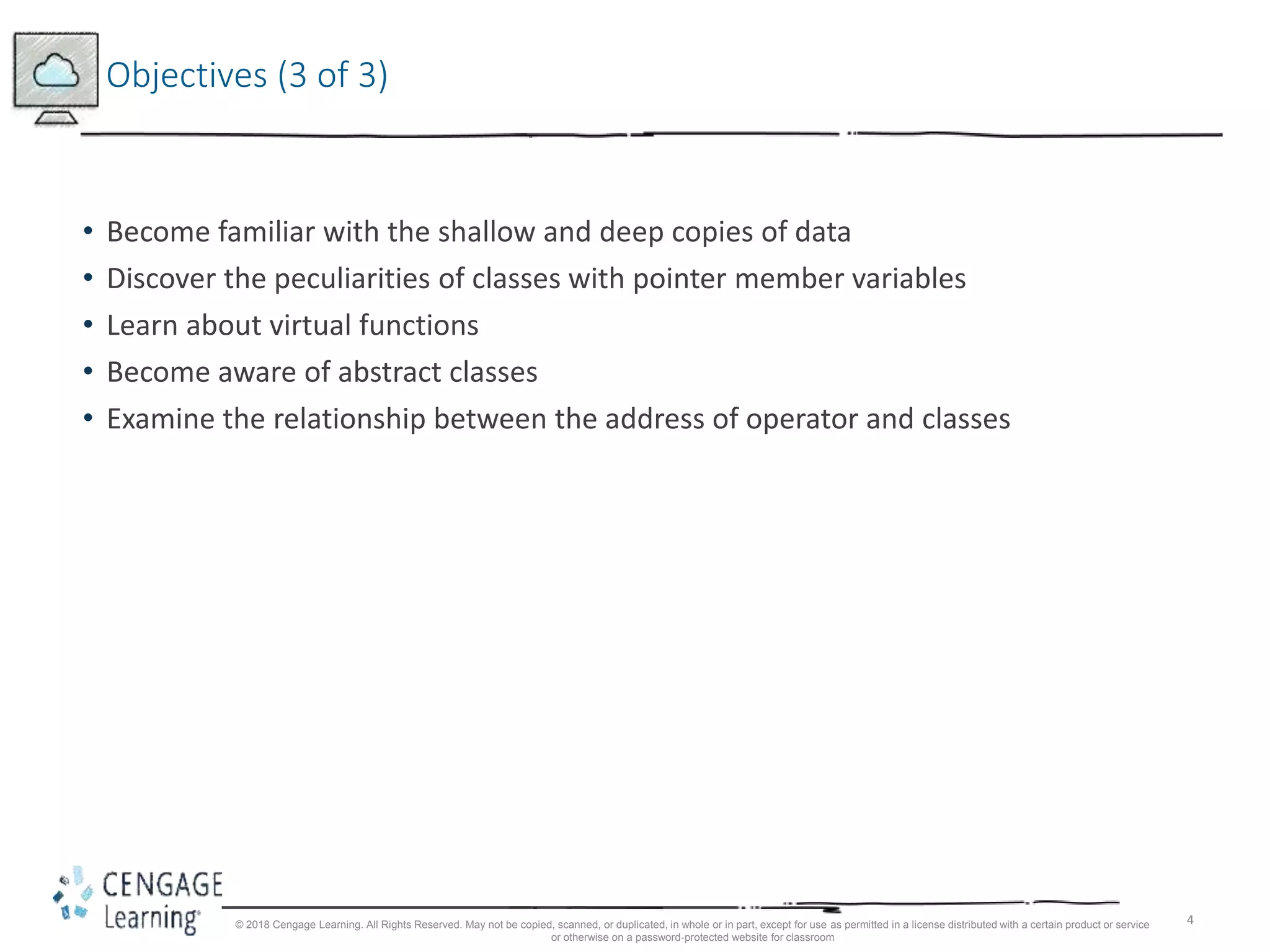
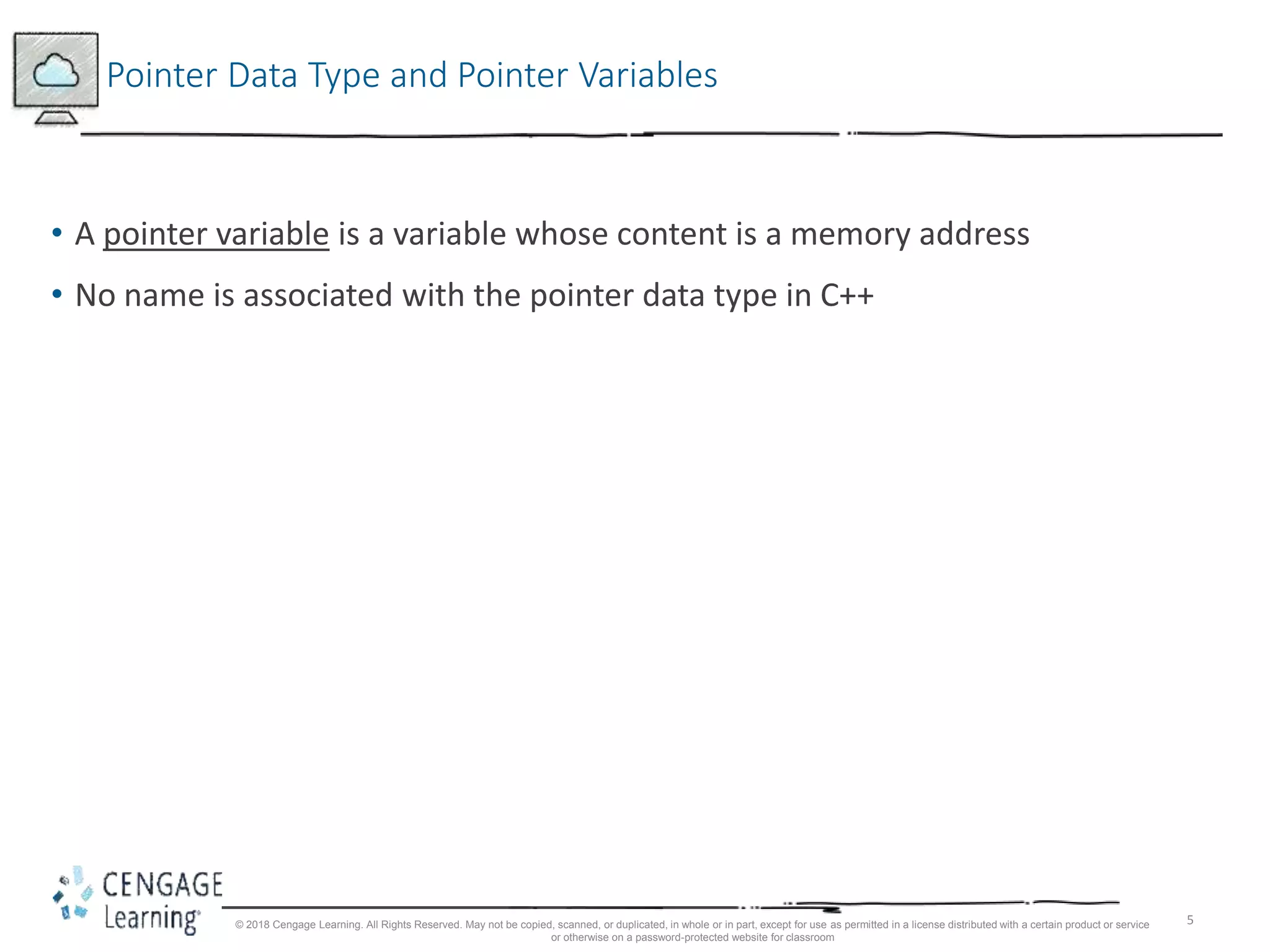




![10
Classes, structs, and Pointer Variables (1 of 3)
• You can declare pointers to other data types, such as a struct:
struct studentType
{
char name[26];
double gpa;
int sID;
char grade;
};
studentType student;
studentType* studentPtr;
• student is an object of type studentType
• studentPtr is a pointer variable of type studentType
© 2018 Cengage Learning. All Rights Reserved. May not be copied, scanned, or duplicated, in whole or in part, except for use as permitted in a license distributed with a certain product or service
or otherwise on a password-protected website for classroom](https://image.slidesharecdn.com/9781337102087pptch12-180811161835/75/9781337102087-ppt-ch12-10-2048.jpg)
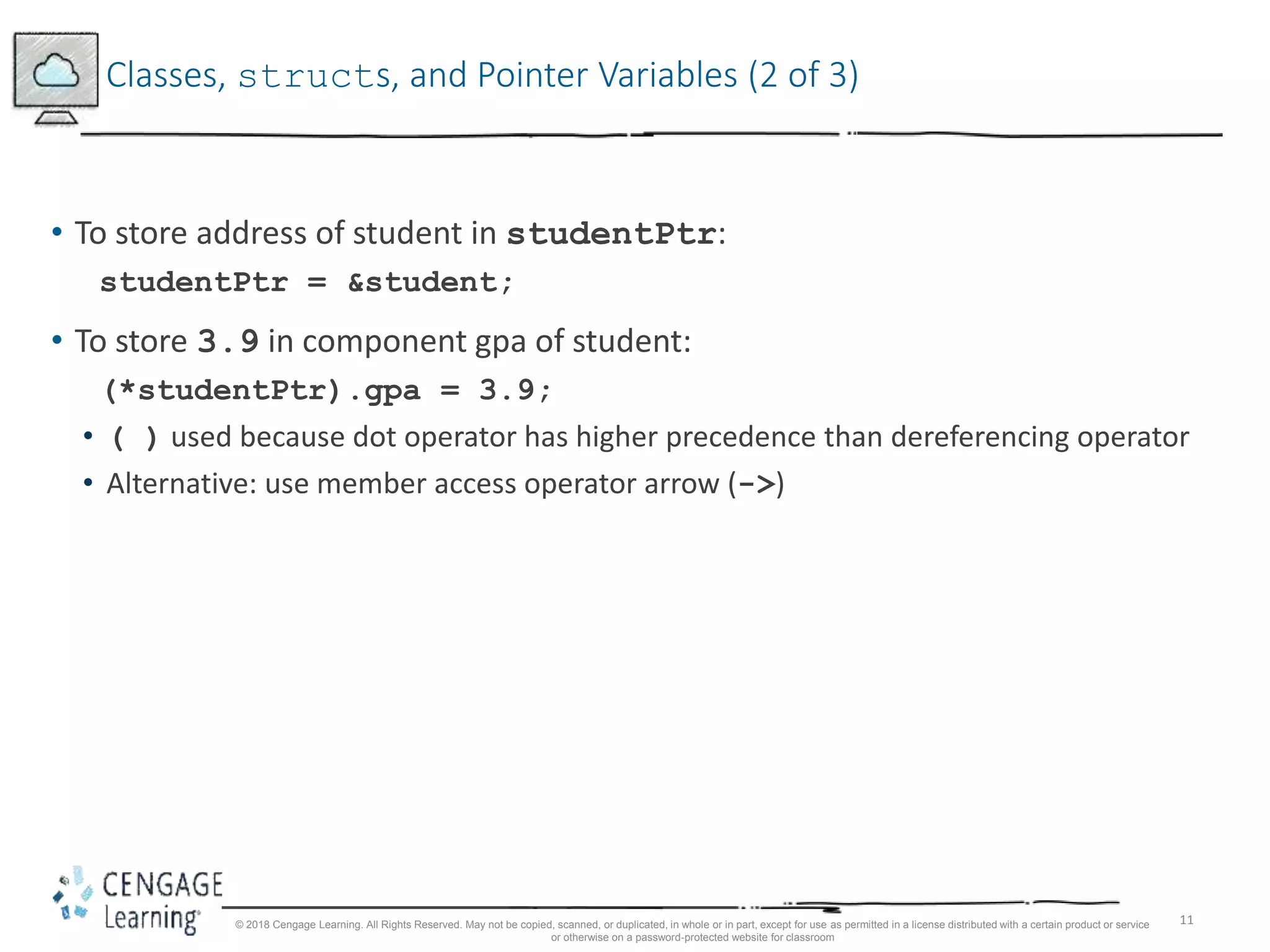






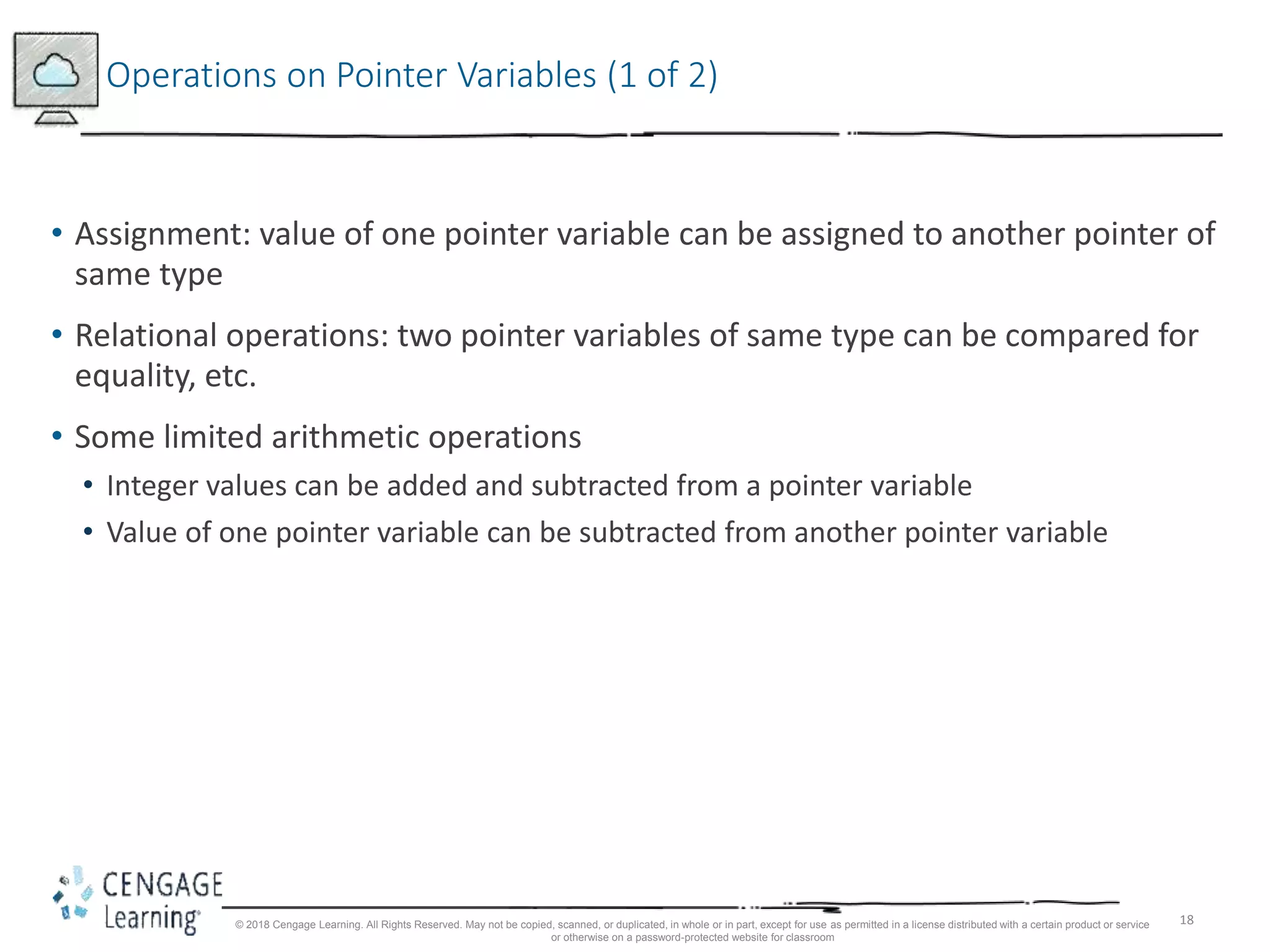
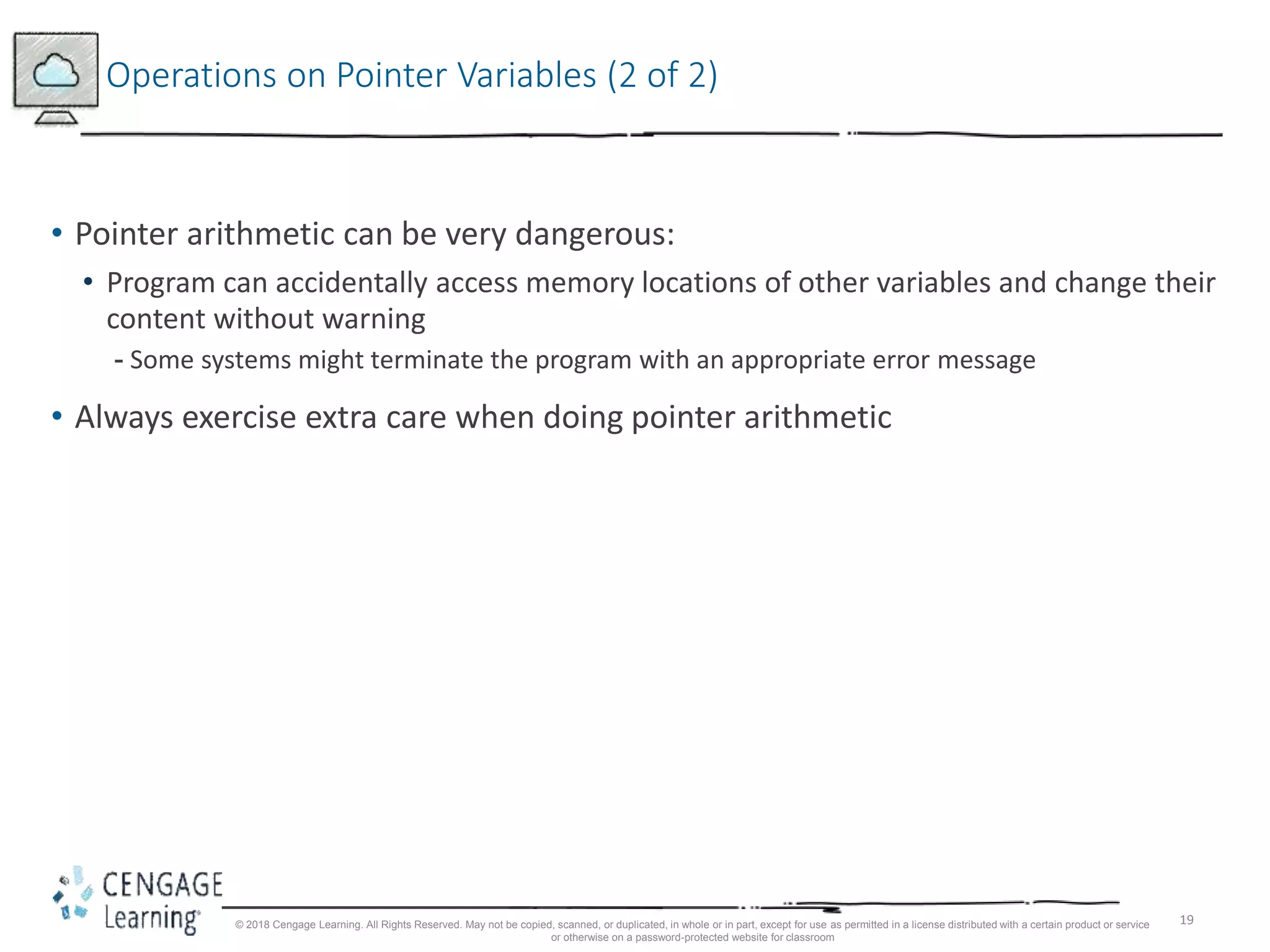
![20
Dynamic Arrays (1 of 2)
• Dynamic array: array created during program execution
• Example:
int *p;
p = new int[10];
*p = 25; //stores 25 in the first memory location
p++; //to point to next array component
*p = 35; // stores 35 into the second memory location
© 2018 Cengage Learning. All Rights Reserved. May not be copied, scanned, or duplicated, in whole or in part, except for use as permitted in a license distributed with a certain product or service
or otherwise on a password-protected website for classroom](https://image.slidesharecdn.com/9781337102087pptch12-180811161835/75/9781337102087-ppt-ch12-20-2048.jpg)
![21
Dynamic Arrays (2 of 2)
• Can use array notation to access these memory locations
• Example:
p[0] = 25;
p[1] = 35;
• Stores 25 and 35 into the first and second array components, respectively
• An array name is a constant pointer
© 2018 Cengage Learning. All Rights Reserved. May not be copied, scanned, or duplicated, in whole or in part, except for use as permitted in a license distributed with a certain product or service
or otherwise on a password-protected website for classroom](https://image.slidesharecdn.com/9781337102087pptch12-180811161835/75/9781337102087-ppt-ch12-21-2048.jpg)
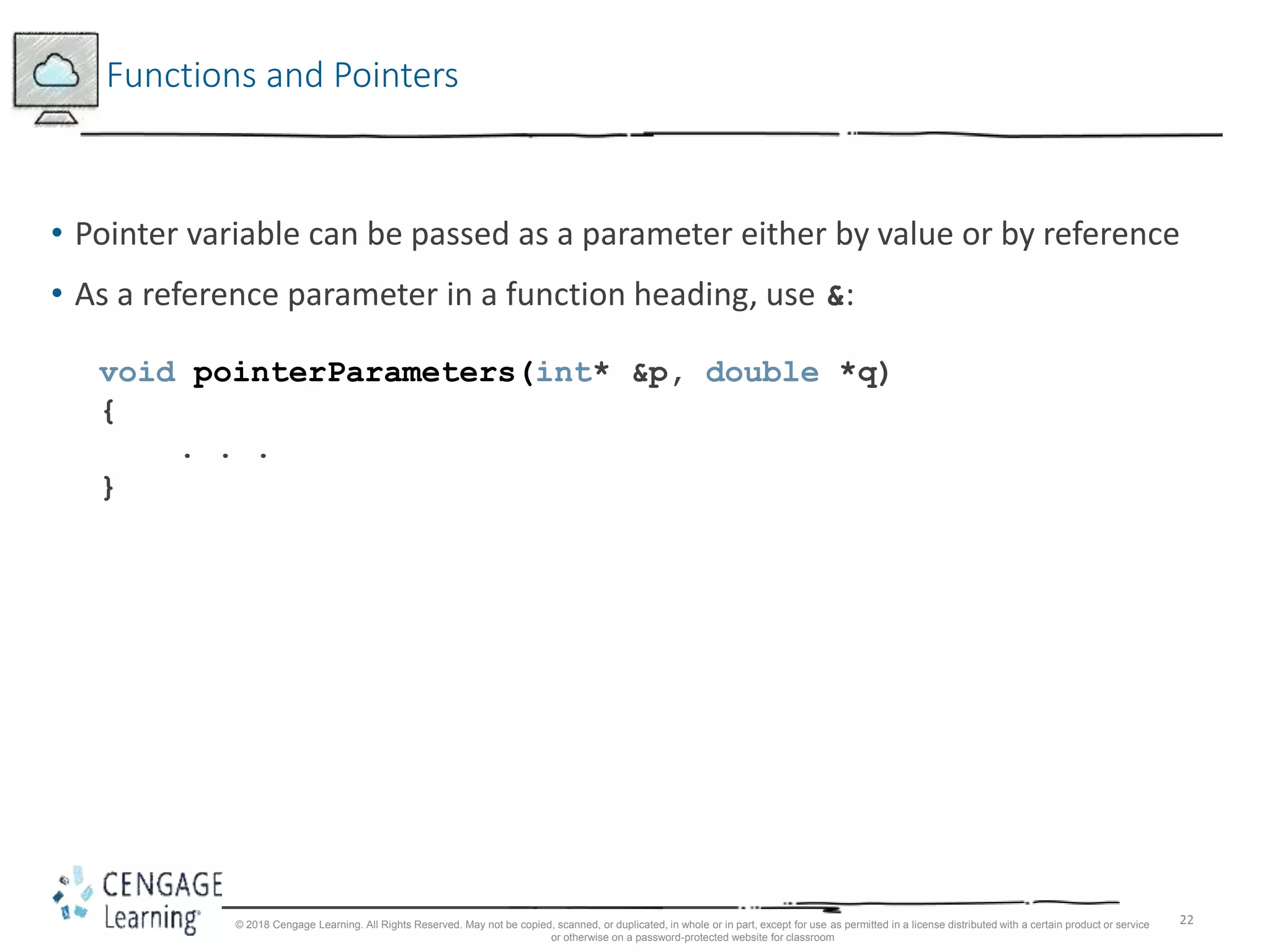
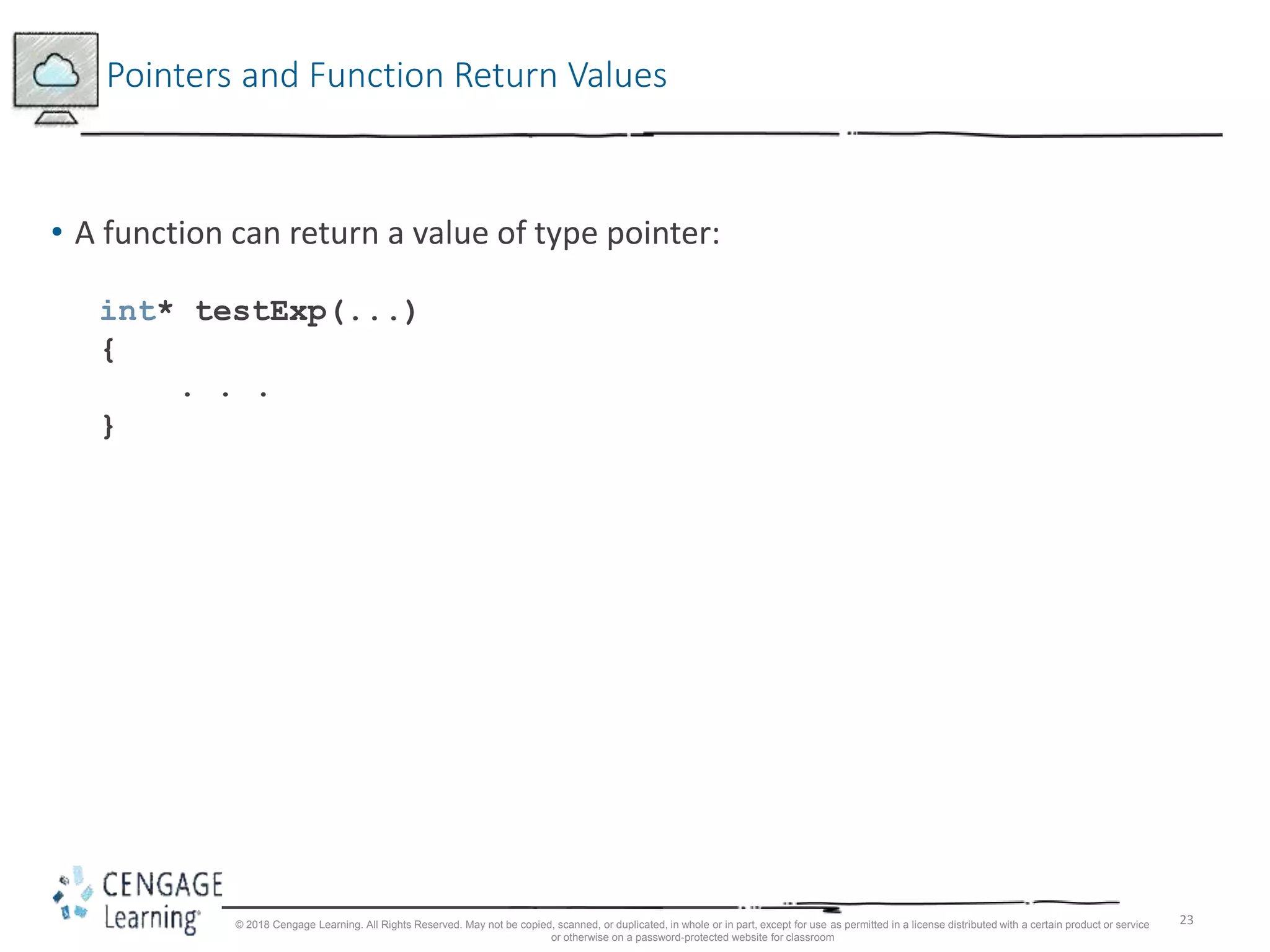
![24
Dynamic Two-Dimensional Arrays
• You can create dynamic multidimensional arrays
• Examples:
int *board[4]; //declares board to be an array of four
//pointers wherein each pointer is of type
for (int row = 0; row < 4; row++)
board[row] = new int[6]; //creates the rows of board
int **board; //declares board to be a pointer to a pointer
© 2018 Cengage Learning. All Rights Reserved. May not be copied, scanned, or duplicated, in whole or in part, except for use as permitted in a license distributed with a certain product or service
or otherwise on a password-protected website for classroom](https://image.slidesharecdn.com/9781337102087pptch12-180811161835/75/9781337102087-ppt-ch12-24-2048.jpg)



![28
Destructor
• If objectOne goes out of scope, its member variables are destroyed
• Memory space of a dynamic array stays marked as allocated, even though it cannot be
accessed
• Solution: in destructor, ensure that when objectOne goes out of scope, its
array memory is deallocated:
ptrMemberVarType::~ptrMemberVarType()
{
delete [] p;
}
© 2018 Cengage Learning. All Rights Reserved. May not be copied, scanned, or duplicated, in whole or in part, except for use as permitted in a license distributed with a certain product or service
or otherwise on a password-protected website for classroom](https://image.slidesharecdn.com/9781337102087pptch12-180811161835/75/9781337102087-ppt-ch12-28-2048.jpg)

